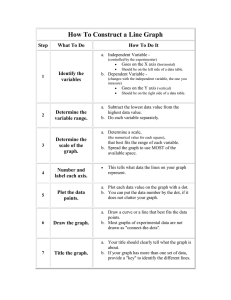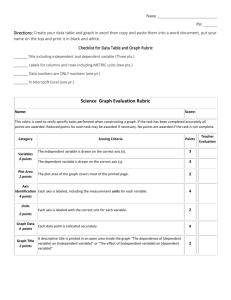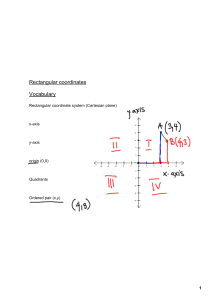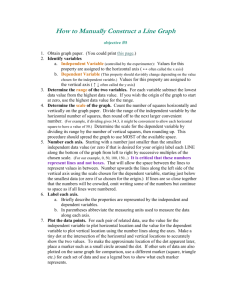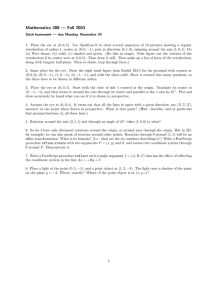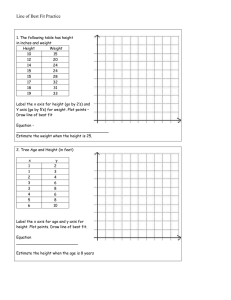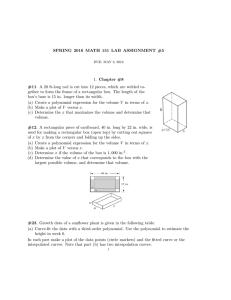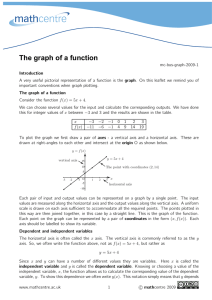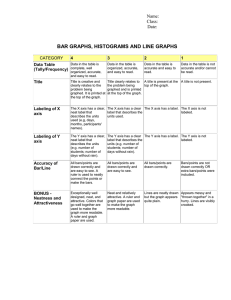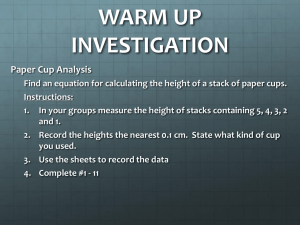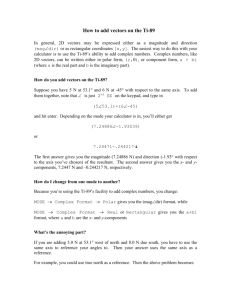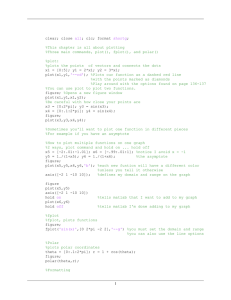Things to Remember when constructing a Line Graph
advertisement
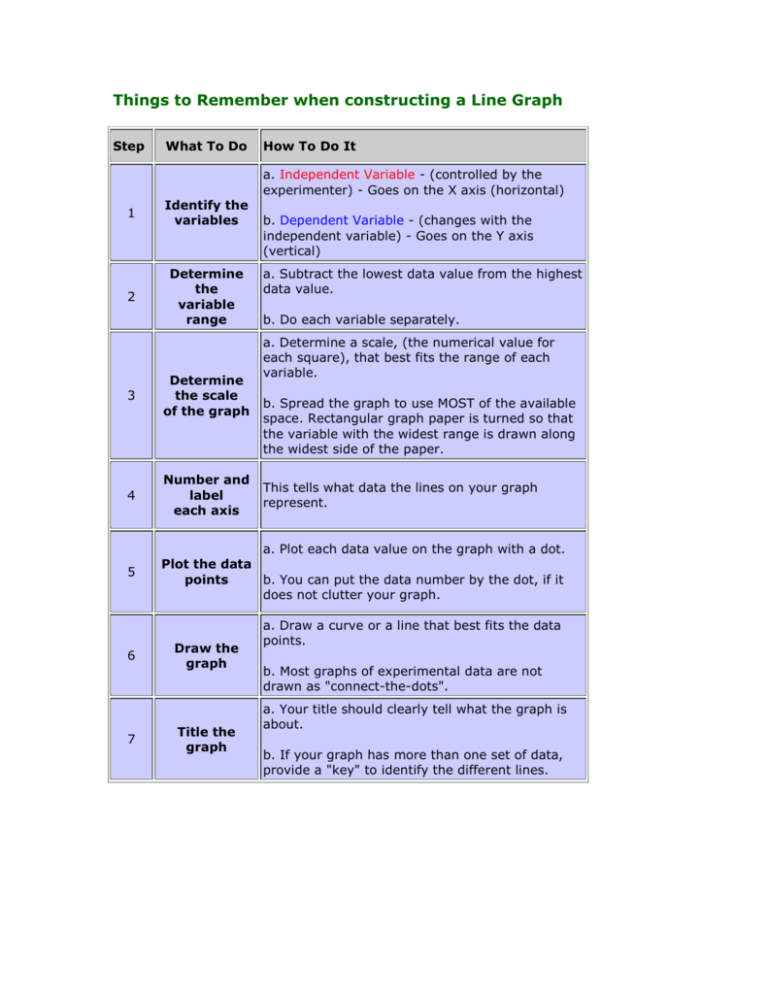
Things to Remember when constructing a Line Graph Step What To Do How To Do It a. Independent Variable - (controlled by the experimenter) - Goes on the X axis (horizontal) 1 Identify the variables 2 Determine the variable range b. Dependent Variable - (changes with the independent variable) - Goes on the Y axis (vertical) a. Subtract the lowest data value from the highest data value. b. Do each variable separately. a. Determine a scale, (the numerical value for each square), that best fits the range of each variable. 3 Determine the scale of the graph 4 Number and label each axis 5 a. Plot each data value on the graph with a dot. Plot the data points b. You can put the data number by the dot, if it does not clutter your graph. 6 7 Draw the graph Title the graph b. Spread the graph to use MOST of the available space. Rectangular graph paper is turned so that the variable with the widest range is drawn along the widest side of the paper. This tells what data the lines on your graph represent. a. Draw a curve or a line that best fits the data points. b. Most graphs of experimental data are not drawn as "connect-the-dots". a. Your title should clearly tell what the graph is about. b. If your graph has more than one set of data, provide a "key" to identify the different lines.
